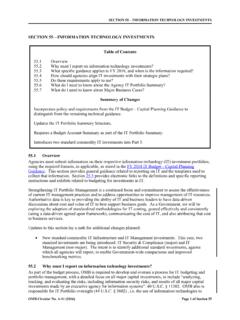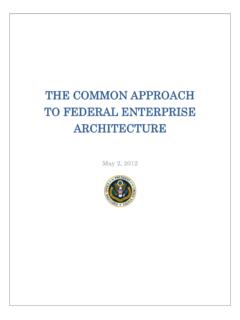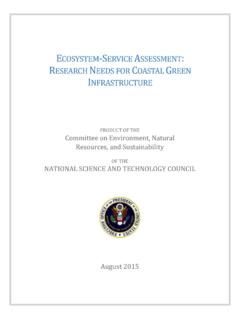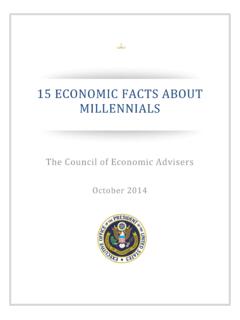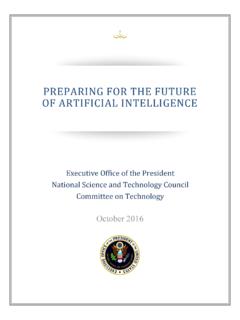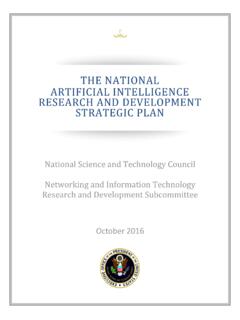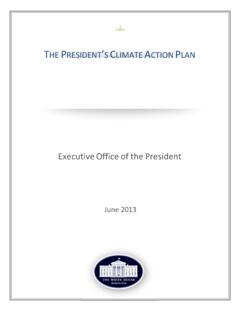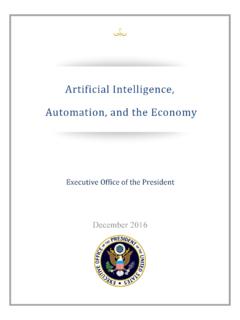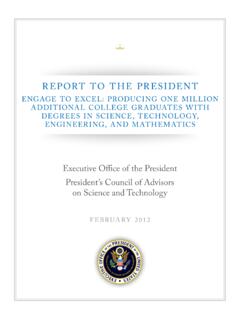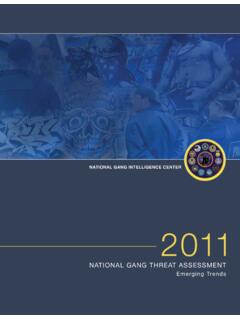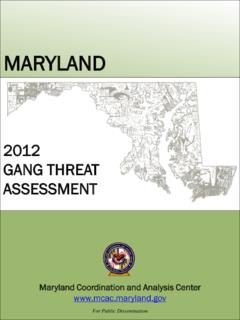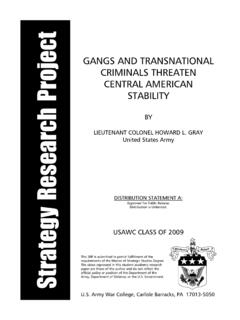Transcription of Drug Trafficking Across the Southwest Border and Oversight ...
1 EXECUTIVE OFFICE OF THE PRESIDENT OFFICE OF NATIONAL drug CONTROL POLICY Washington, 20503 drug Trafficking Across the Southwest Border and Oversight of Counterdrug Assistance to Mexico Caucus on International Narcotics Control United States Senate Tuesday, November 17, 2015 10:00 226 Dirksen Senate Office Building Statement of Michael P. Botticelli Director of National drug Control Policy 1 Thank you, Chairman Grassley and Co-Chairman Feinstein, and distinguished Members of the Caucus, for the opportunity to discuss counter-narcotics efforts along the Southwest Border . The United States faces a very serious challenge to its public health and public safety from drug Trafficking Across the Southwest Border . The production and movement of drugs from Mexico into the United States is a complex, violent, and highly consequential illegal enterprise that poses not just a national security threat to our nation, but a threat to every community Across the country.
2 The Office of National drug Control Policy (ONDCP) was established in 1988 by Congress with the principal purpose of reducing illicit drug use, manufacturing, and Trafficking ; drug -related crime and violence; and drug -related health consequences. As a component of the Executive Office of the President, our office establishes policies, priorities, and objectives for the Nation's drug control programs and ensures that adequate resources are provided to implement them. We also develop, evaluate, coordinate, and oversee the international and domestic anti- drug efforts of Executive Branch agencies and ensure such efforts sustain and complement state and local drug policy activities. One of the central responsibilities of ONDCP is to develop the Administration s comprehensive National drug Control Strategy.
3 We have now released the 2015 National drug Control Strategy, and virtually every part of it addresses Border -related challenges or consequences of drugs transshipped through Mexico. Chapters deal with domestic drug Trafficking and international partnerships and describe in detail more than a dozen action items focused directly or indirectly on Mexico or the Border . These action items focus agencies on steps they can take to support Mexico s efforts to disrupt drug and precursor chemical Trafficking , combat money laundering, and to provide focused training and assistance to strengthen their security and judicial institutions. Other action items concentrate on steps that must be taken within the United States to halt drug Trafficking and bulk cash smuggling both on the Border and in the interior of the country.
4 This testimony will review the current drug threats facing our country Across the Southwest Border and our plans to address this threat. The drug Trafficking Threat from Mexico Mexican transnational criminal organizations (TCOs) remain the greatest criminal drug threat to the United States. These Mexican poly- drug organizations traffic heroin, methamphetamine, cocaine, and marijuana throughout the United States using established transportation routes and distribution networks. They control drug Trafficking Across the Southwest Border and are seeking to expand their share of illicit drug markets, particularly for heroin. national-level gangs and neighborhood gangs continue to form relationships with Mexican TCOs to increase gang profits through drug distribution and transportation, for the enforcement of drug payments, and for protection of drug transportation corridors from use by rival gangs.
5 Many gangs rely on Mexican TCOs as their primary drug supplier, and Mexican TCOs depend on street-level gangs that have a pre-existing customer base for drug distribution. 2 Heroin In 2013 there were over 8,200 overdose deaths involving heroin in United These deaths are unacceptable as they are preventable using the public health overdose intervention and treatment options we have available. I regularly meet with parents who have lost children due to a drug overdose. Their suffering is a tragedy. Domestically, we are working on an array of fronts, including expanding treatment for substance use disorders, promoting early intervention, overdose prevention, and partnering with law enforcement and public health entities on innovative initiatives to reverse the overdose trend.
6 Opium and heroin production has substantially increased in Mexico in recent years. Heroin seizures along the Southwest Border increased sharply (296%) from 2008 to 2013, suggesting a substantial increase in the amount of heroin entering the United In 2014, an estimated 42 pure metric tons of heroin were produced in Mexico, up from over 26 pure metric tons in This compares to a combined estimate of about four metric tons from Colombia and Guatemala. Although Afghanistan is the world s largest producer of heroin (740 metric tons in 2014), recent analyses of the heroin seizures by the drug Enforcement Administration (DEA) indicate that a very small percentage (less than five percent) of heroin consumed in the United States is from that country, and a very large proportion of the heroin seized entering the United States comes from The increased role of heroin manufacturers and traffickers in Mexico is altering previously established Trafficking patterns.
7 As more heroin enters the United States through the Southwest Border , the western states have increasingly significant roles as heroin transit areas. DEA and local law enforcement reports from several western states indicate that heroin is entering the United States Across the Southwest Border in greater volume. Mexican TCOs are expanding their operations to gain a larger share of the lucrative eastern heroin markets. The heroin market in the United States has been historically divided along the Mississippi River, with western markets using Mexican black tar and brown powder heroin and eastern markets using white powder heroin predominantly from the Western Hemisphere. Although precise estimates are not available, it is believed that heroin producers in Mexico are now manufacturing high purity white heroin, which enables them to enter additional heroin markets.
8 1 Centers for Disease Control and Prevention, National Center for Health Statistics. Multiple Cause of Death, 1999-2013 on CDC WONDER Online Database, released 2015. Extracted by ONDCP from on January 30, 2015. 2 drug Enforcement Administration, 2014 National drug Threat assessment Summary, December 2014, Chart 4. 3 US Government estimates of Mexican potential heroin production, 2015. 4 drug Enforcement Administration. 2014. Heroin Signature Program: 2012. DEA-DCW-DIR-026-14, May. 3 Methamphetamine Seizure data,5 law enforcement reporting,6 and localized drug consequence information such as treatment admissions7 all indicate that methamphetamine Trafficking and use continue to increase within the United States.
9 Mexican TCOs have adapted to legal restrictions placed on precursor chemicals, in the United States and Mexico, and are able to continue producing large amounts of high-purity, high-potency The majority of methamphetamine available in the United States is high-grade Mexican cartel-produced methamphetamine. The average purity (amount of total methamphetamine) of this methamphetamine is approximately 96 percent, and the average potency (amount of the more active D-meth isomer) is around 88 Thousands of kilograms of methamphetamine from Mexico are seized along the Southwest Border annually. Data from DEA indicate that between 2009 and 2013, the amount of methamphetamine seized along the Southwest Border increased 233 percent. And according to Customs and Border Protection (CBP), methamphetamine seizures along the Southwest Border increased 20 percent from 2013 to 2014.
10 Of the methamphetamine seizures in 2014, 62 percent occurred in California, followed by Texas with 23 percent. Moreover, large shipments (50 pounds or more) of methamphetamine, once a rarity, are now regularly seized at the Southwest Border . From 2008 to 2014, methamphetamine submissions to forensic labs, which is an indicator of availability, increased by 70 percent. Of the million current nonmedical users of stimulants, one-third reported as current methamphetamine Cocaine TCOs smuggle the majority of cocaine Across the Southwest Border . Mexican TCOs obtain multi-ton shipments of cocaine from source countries in South America, primarily from Colombia. In 2014, an estimated 86 percent of this cocaine was smuggled through the Mexico/Central America After large loads reach transshipment points in Mexico or Central America, they are broken down into small, more difficult-to-detect loads that are smuggled Across the Southwest Border into the United States.
